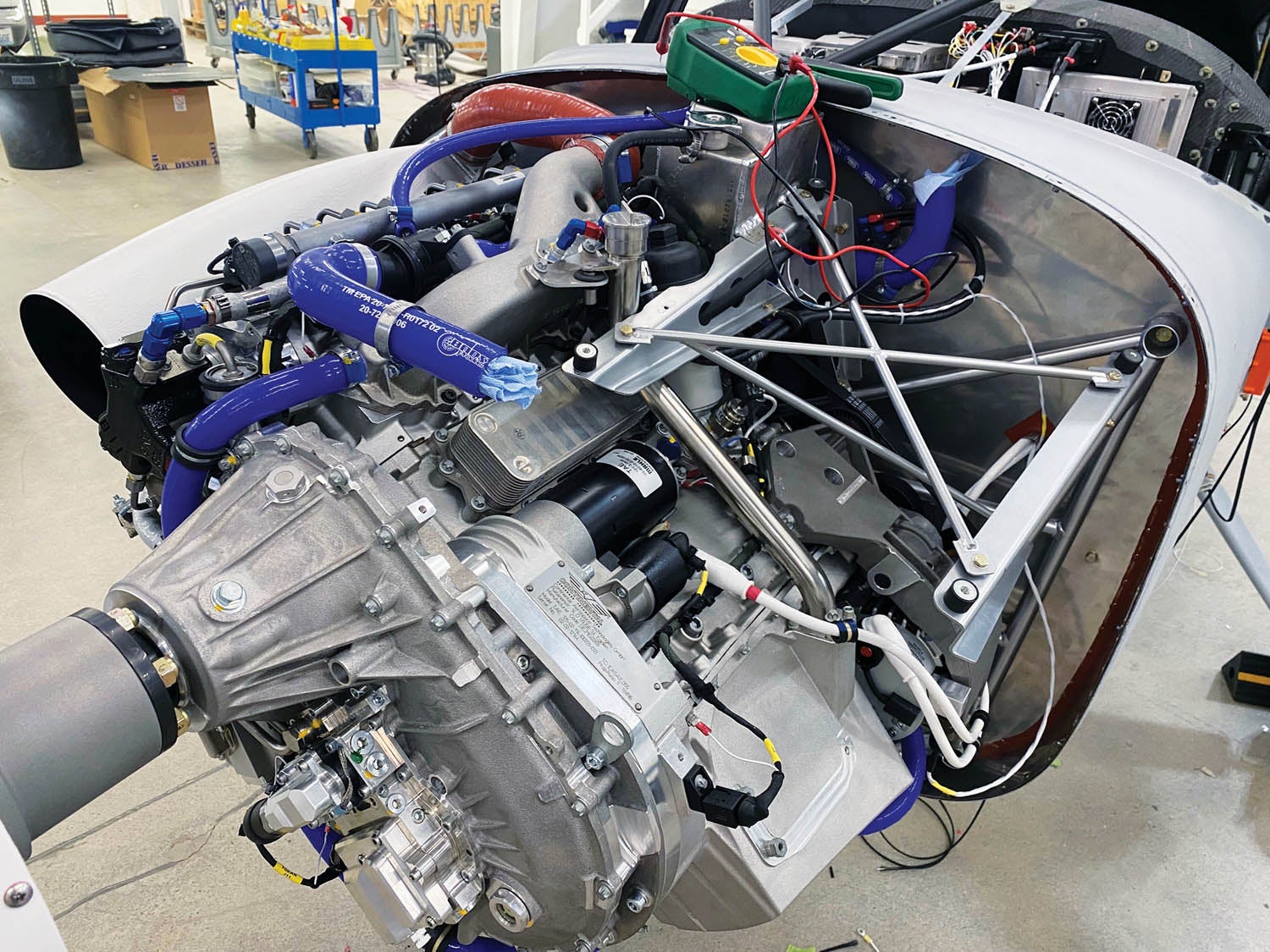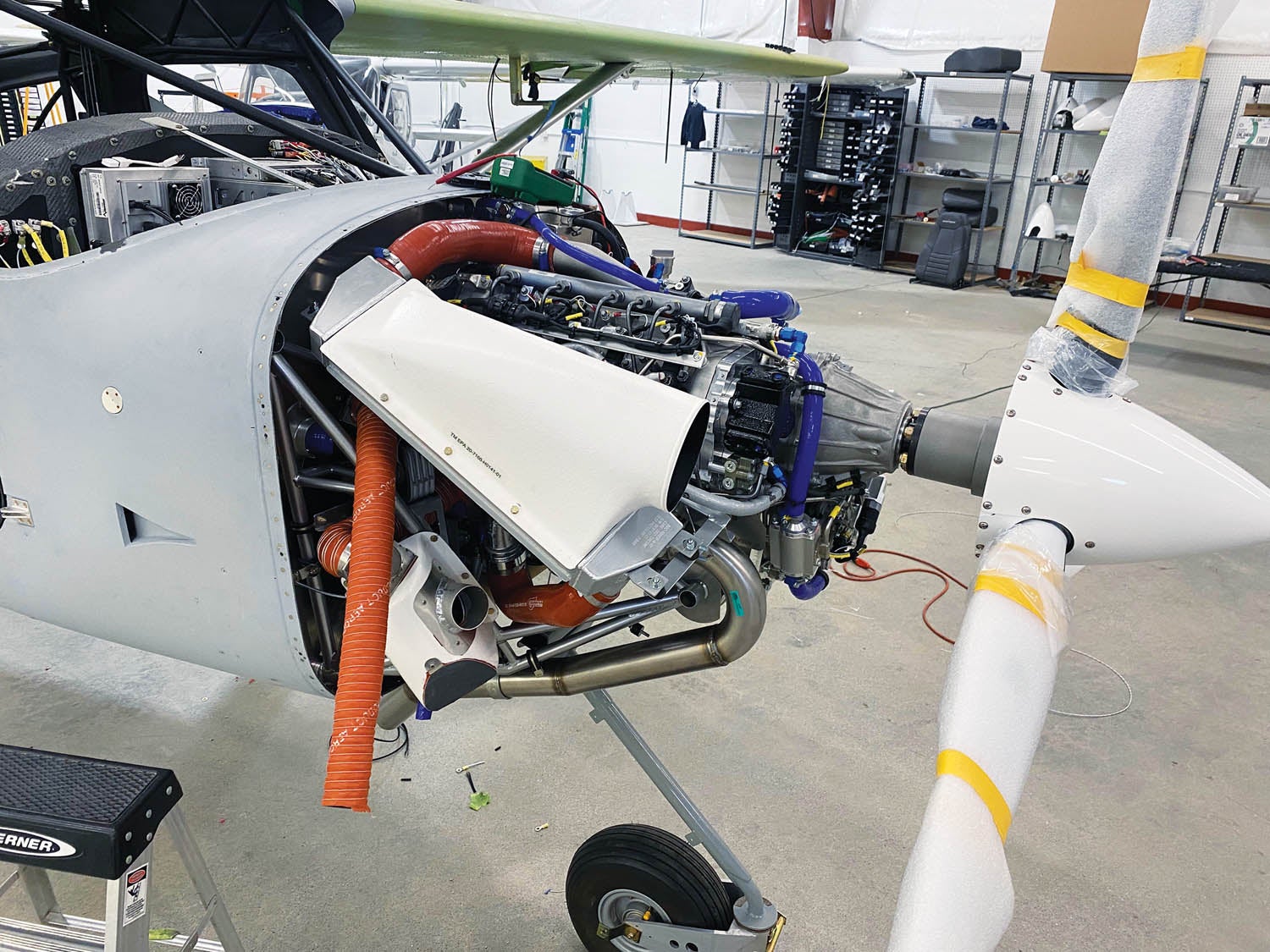Few disagree that the Experimental/Amateur-Built world revolves around gas-burning piston engines. Of course, the legacy engines have had a significant head start but Rotax has been beavering away on development and gaining market share with the four-strokes for more than 30 years. I remember seeing the 912 not long after its introduction in 1989 and being slightly dismissive of it, thinking that the 80-hp range was already well served. But I wasn’t looking or thinking globally, nor did I consider that new airframes would be developed just because the 912 was light and compact, fitting into places ill suited for, say, a Continental O-200 or Lycoming O-235.
As the Rotax grew and became dominant in the near-100-hp bracket, more traditional engines kept their stranglehold on the middle ground. At the same time, over the last three decades I’ve watched the engine market evolve, a few new engines have arrived to great fanfare, promise a lot and deliver little, while the old established designs that many thought were just a footfall from the grave carried on. I would argue that the nature of today’s homebuilder—more likely to build an example close in spec to the factory’s efforts, less likely to range far afield—has helped keep the legacy engines not just viable but front and center. After all, kit makers can themselves be cautious about engine choices and are unlikely to openly recommend engines they have not tested themselves. (Not to say all kit manufacturers are limiting. Zenith is among those openly supporting alternative engines.)
Up until the last year or so, I saw the legacy engines keeping their place in the pecking order—at least until Rotax delivers an alternative to the 180-hp Lycoming-style engines, anyway. But raw economics and supply-chain issues have changed my thinking a bit.
The Tipping Points
For starters, Lycoming has increased prices dramatically in the last two years, where now the “lowly” O-320 from the factory costs an eye-watering $40K—and $48K for an injected Thunderbolt version. Moreover, Lycoming’s lead times have grown substantially, though Williamsport is not alone in having this challenge. Finally, because of parts shortages and, it needs to be said, the factories tending to hang onto parts to build their own engines, the supply to the independent engine shops has slowed to a trickle. Heck, Superior has halted whole-engine manufacturing for a lack of parts and increased demand from shops for important components like cylinders. And that means key competition for the OEMs has been kneecapped, which, I’m sure, gives some fuel to the internal discussions about how much of a price increase the customer will swallow.
This sticker shock is pushing builders in directions they might have not considered in the past. There’s significant evidence that “alternative” engines and their manufacturers or distributors are there to pick up the slack. This includes Rotax as well as ULPower, which has also been slowly and progressively developing its product line, benefiting from ever more engines in the field and finding itself very competitively priced.
Demand for the AeroMomentum and Viking powerplants has been up as well. As their numbers grow, heretofore conservative builders are likely to give them even more of a look than before.
Bottom line: The price differential for any given amount of horsepower has grown sufficiently that even those predisposed to sticking to the “tried and true” have come to seriously consider these alternatives. There is a tipping point here, where normally conservative builders will simply say “enough” to what they perceive as an overpriced legacy engine and make the leap into less-familiar territory.

Same With Diesel
On a recent visit with Glasair Aviation, I was surprised to see the build shop focusing on a CD-155-powered Sportsman rather than on the development mule with an IO-390-C on the nose. But Ran Fang, GA’s general manager, pointed out that there has always been some demand for the Jet A-burning engines, noting that the recent price increases from Lycoming have greatly narrowed the gap to the diesel. When the entire firewall-forward package around an IO-390 and constant-speed prop was in the $65K range, the roughly $20K jump to the diesel didn’t make a lot of sense.
But now with the IO-390 reaching $60K by itself and the desirable composite props on the far side of $20K, the CD-155 package has, as a percentage of the whole, become more competitive. For the Sportsman, the CD-155 is a $110K FWF proposition. Although that seems hefty, it includes the prop, prop governor, injection system, hoses, radiator, intercooler and many other parts that, for a conventional builder, would not come as part of the FWF kit. The diesel Sportsman was developed for foreign markets but those sales failed to materialize. I thought the diesel was dead. It is not.

We’ve flown the CD-155 before in the Sportsman and it performs as expected. Climb rates and overall cruise performance trail the more powerful normally aspirated engine down low, but the turbo CD-155 closes the gap at altitude and has better overall fuel economy. When the CD-155-to-Lycoming price gap was larger and fuel less expensive, the break-even point was much further down the road.
The CD-155 program will drive something else for Glasair Aviation. Because Continental does not want individual builders doing the FWF installation, any future Sportsman aircraft will have to have at least that part done at the factory. It’s not a return of Two Weeks to Taxi necessarily—that’s in the plan, but will take considerable time to implement—but it does signal a small shift for the company, which has subsisted on kit and accessories sales alone for the last couple of years.














The high cost of engine will probably force the potential EAB builder to buy an older certificate airplane for 1/2 the cost of a new EAB with a traditional engine.
Hi Marc,
In considering engine costs, “sticker shock” as you say, what is you take on derivatives of the Corvair (for 100+ hp) or VW (for <80hp)? They cost significantly less than Rotax or ULPower, which you note are competitive (compared to Lycoming or Continental).
Thanks and Happy New Year,
Jeff
Hi Marc, does the CD 155 still have gearbox issues ? The CD 155 engines installed in DA 40s have a 300 hour life !